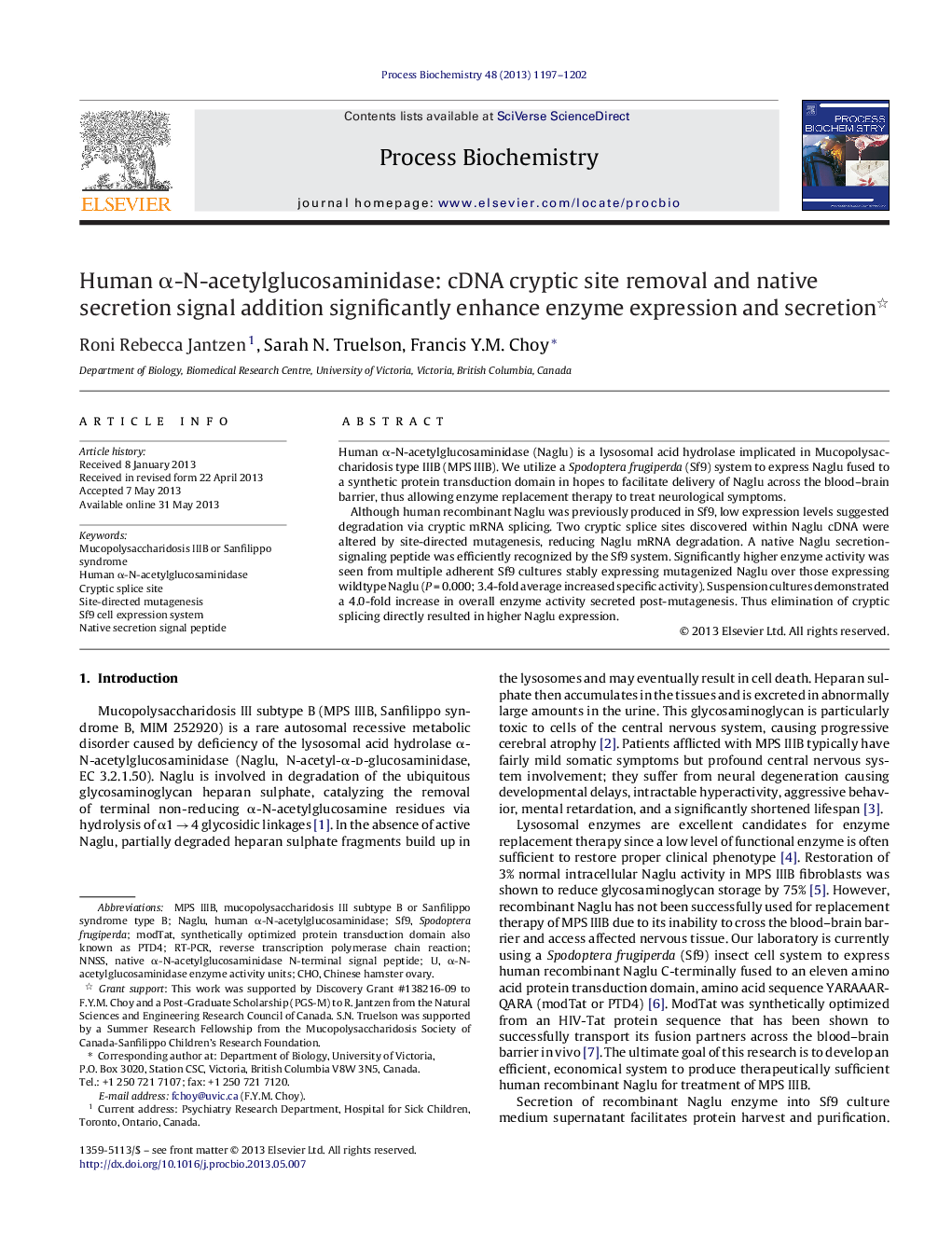| Article ID | Journal | Published Year | Pages | File Type |
|---|---|---|---|---|
| 10235790 | Process Biochemistry | 2013 | 6 Pages |
Abstract
Although human recombinant Naglu was previously produced in Sf9, low expression levels suggested degradation via cryptic mRNA splicing. Two cryptic splice sites discovered within Naglu cDNA were altered by site-directed mutagenesis, reducing Naglu mRNA degradation. A native Naglu secretion-signaling peptide was efficiently recognized by the Sf9 system. Significantly higher enzyme activity was seen from multiple adherent Sf9 cultures stably expressing mutagenized Naglu over those expressing wildtype Naglu (PÂ =Â 0.000; 3.4-fold average increased specific activity). Suspension cultures demonstrated a 4.0-fold increase in overall enzyme activity secreted post-mutagenesis. Thus elimination of cryptic splicing directly resulted in higher Naglu expression.
Keywords
Related Topics
Physical Sciences and Engineering
Chemical Engineering
Bioengineering
Authors
Roni Rebecca Jantzen, Sarah N. Truelson, Francis Y.M. Choy,
